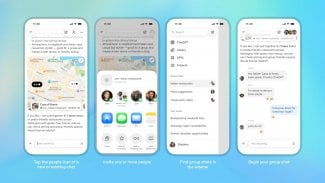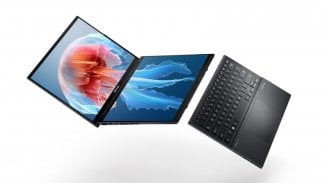fontforge
NAME
fontforge - create and modify PostScript, TrueType and SVG fonts
SYNOPSIS
fontforge
[-c
R string ]
[-cmap
R maptype ]
[-depth
R pixeld ]
[-display
R str ]
[-last]
[-help]
[-keyboard
R ktype ]
[-new]
[-nosplash]
[-recover
R mode ]
[-script
R file ]
[-sync]
[-usage]
[-vc
R vclass ]
[-version]
fontfile ...
DESCRIPTION
The program
fontforge
allows you to create and modify font files,
accepting input in the following formats
(with associated file extensions appearing in parentheses):
Glyph Bitmap Distribution (.bdf)
Macintosh resource fonts (.dfont, .bin, .hqx)
OpenType (.otf)
R fontforge spline font database (.sfd)
, which includes:
ASCII format (.pfa)
Binary format (.pfb)
CID-keyed fonts, Adobe convention used primarily for Asian characters (.cid, .otf)
Type 0 (.ps)
Type 3 (.ps)
Scaleable vector graphics fonts (.svg)
TeX bitmap (.pk)
TrueType (.ttf, .ttc)
X11 bitmap (.pcf)
If the argument list contains a font file name (or several),
fontforge
opens a
fontview
window for each font displaying the characters of the that font.
In the absence of options or arguments,
the program opens a file-picker window,
allowing you to browse your disk to find a font file,
or create a new one.
This manual page is intended only as a rudimentary overview;
see the HTML Users Manual for more complete information.
OPTIONS
I -c string
Must be the first argument. Executes "string" as a set of scripting commands.
Any additional arguments will be passed to the script.
I -cmap maptype
Employ the specified method to control 8-bit colormaps,
where
maptype
assumes one of these three values:
current
Attempt to allocate colors in the current (shared) colormap.
The program will likely not find everything it requires.
copy
Allocate what can be allocated, then copy the current colormap;
it can thus make use of cells other programs are using.
private
Create a new colormap and fill it with the required colors.
I -depth pixeld
Attempt to employ a visual that matches the specified pixel depth,
R pixeld .
I -display str
Employ the X display specified by the string
str
(for example: localhost:0).
-help
Display the usage description
and start a web client displaying the online documentation.
I -keyboard ktype
Alter the displayed menus to employ modifier keys appropriate
to the specified keyboard type,
where
ktype
assumes one of the following four values:
ibm
IBM PC type keyboard.
mac
Apple Macintosh keyboard.
sun
Sun workstation keyboard.
ppc
Macintosh keyboard, but on a system running SuSe linux
(the mappings differ from those used under MacOS X).
-last
Opens whatever font you last edited with
fontforge.
If you specify
n
-last
fontforge
will open the last
n
fonts.
-new
Create a new font with the ISO 8859-1 encoding
(the international encoding standard for western Europe,
and the standard for most X fonts).
-nosplash
Suppress display of the splash screen.
I -recover mode
Control the crash recovery mechanism
(helpful if crash recovery causes problems),
where
mode
takes on one of three allowed settings:
auto
perform automatic recovery (default) if the program crashed before saving changes.
clean
Delete recovery information.
none
Suppress crash recovery.
I -script file
Execute the script named
R file .
Does not open the X display.
This must be the first argument passed to fontforge. Any other arguments are
handled by the scriptfile itself.
Any other command line arguments will be passed to the script.
The program contains a command interpreter which allows access to
most but not all of its interactive features.
If a scriptfile is executable, and if its first line contains
the string "fontforge", then the argument
I -script
may be omitted. This means that fontforge can be used as an interpreter.
-sync
Make X synchronous.
Used primarily for debugging, this option slows X down.
-usage
Display the usage description.
-vc vclass
Attempt to use a visual that matches the class,
R vclass ,
specified as either the name of a visual class
or an integer enumerating a visual class.
-version
Display the current version
(a six digit string containing the date stamp of the source files).
ENVIRONMENT
If any of the following environment variables exist,
they are used:
BROWSER
Specifies the name of a browser program for examining documentation.
AUTOTRACE
Specifies the location of the autotrace program (usually FontForge can figure
this out without help, but not always).
MF
Specifies the location of the metafont program.
FONTFORGE_VERBOSE
Turns on verbose mode in scripting. Each statement is printed as it is executed.
FILES
~/.PfaEdit/autosave/
crash recovery directory
/usr/local/share/fontforge/*.ui
translations for the user interface
/usr/local/share/doc/fontforge/*.html
optional location for online documentation.
/usr/local/share/fontforge/*.cidmap
"encoding" files for Adobe's cid formats
from http://fontforge.sourceforge.net/cidmaps.tgz
SEE ALSO
sfddiff(1)
The HTML version of the
fontforge
manual,
available online at:
http://fontforge.sourceforge.net/
NOTE
R fontforge
used to be called
R pfaedit.
AUTHOR
Copyright (C) 2000-2004 by George Williams (gww@silcom.com).
Original manual page by Tom Harvey, subsequently modified by George Williams.
Heavily rewritten and modified to use standard
R -man (5) macros by R.P.C. Rodgers (rodgers@nlm.nih.gov), 23 October 2002.
BUGS
Undoubtedly many, but unknown and ever changing.
See
http://fontforge.sourceforge.net/#known-bugs
for a current list.



















